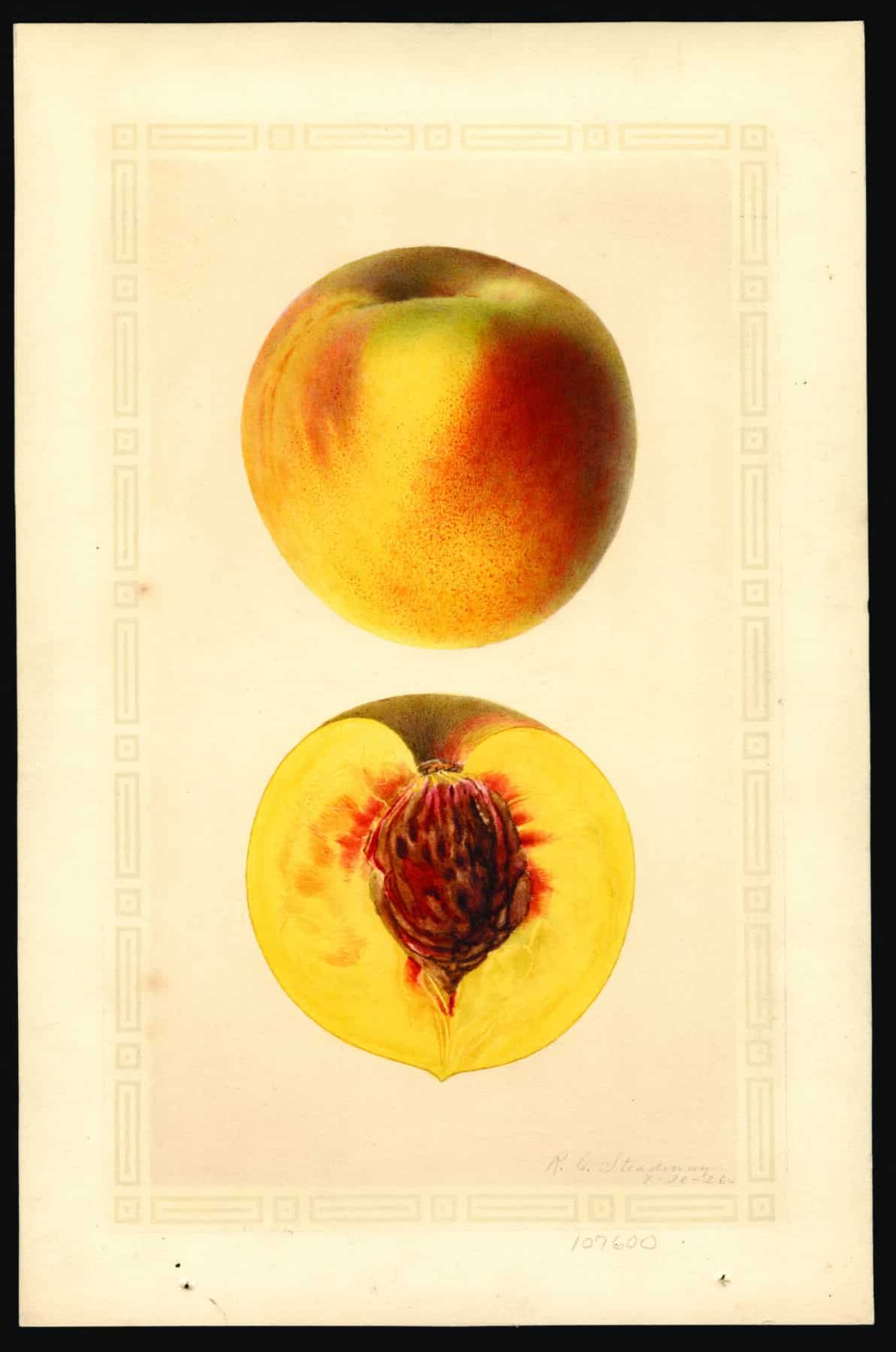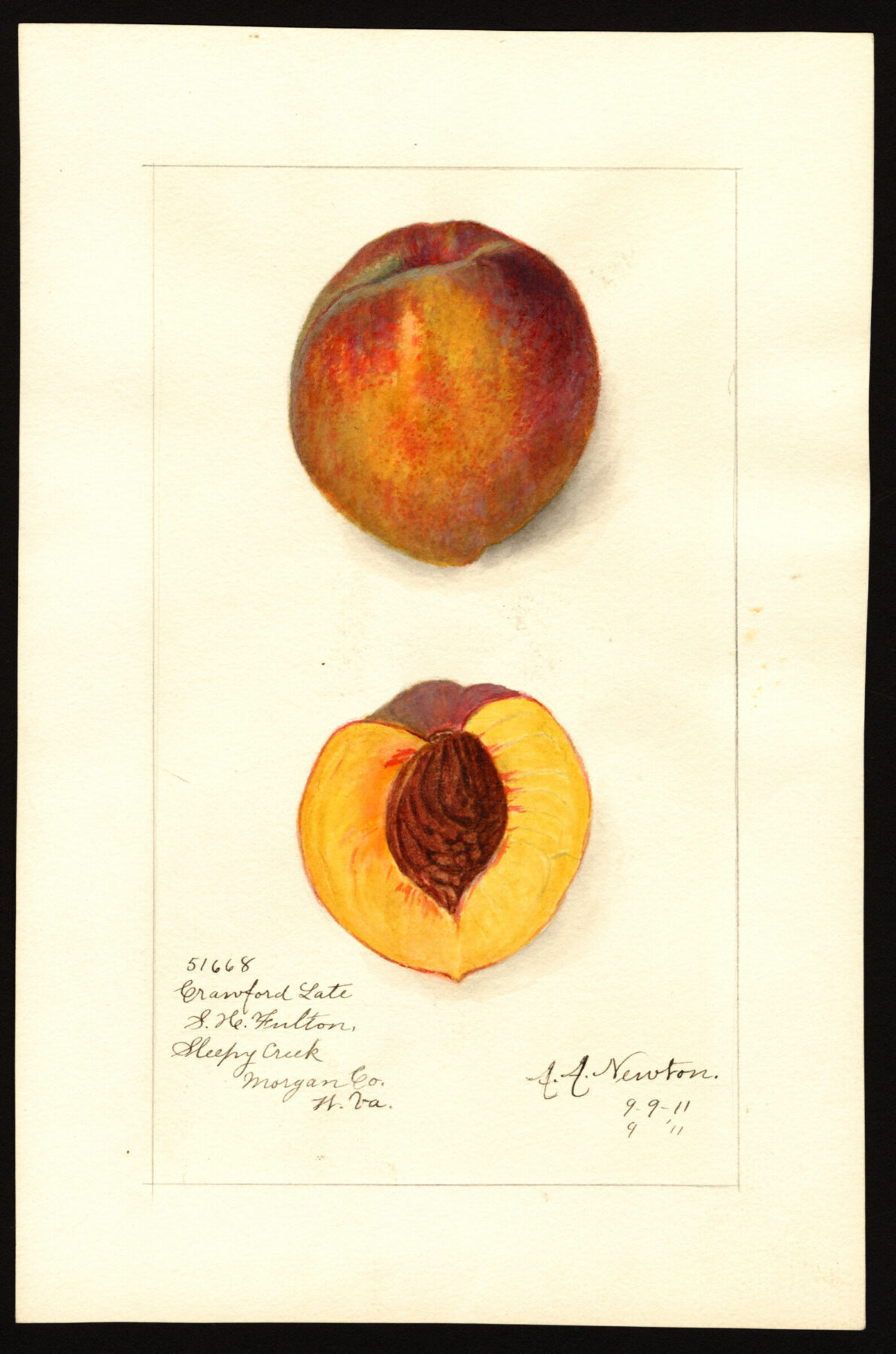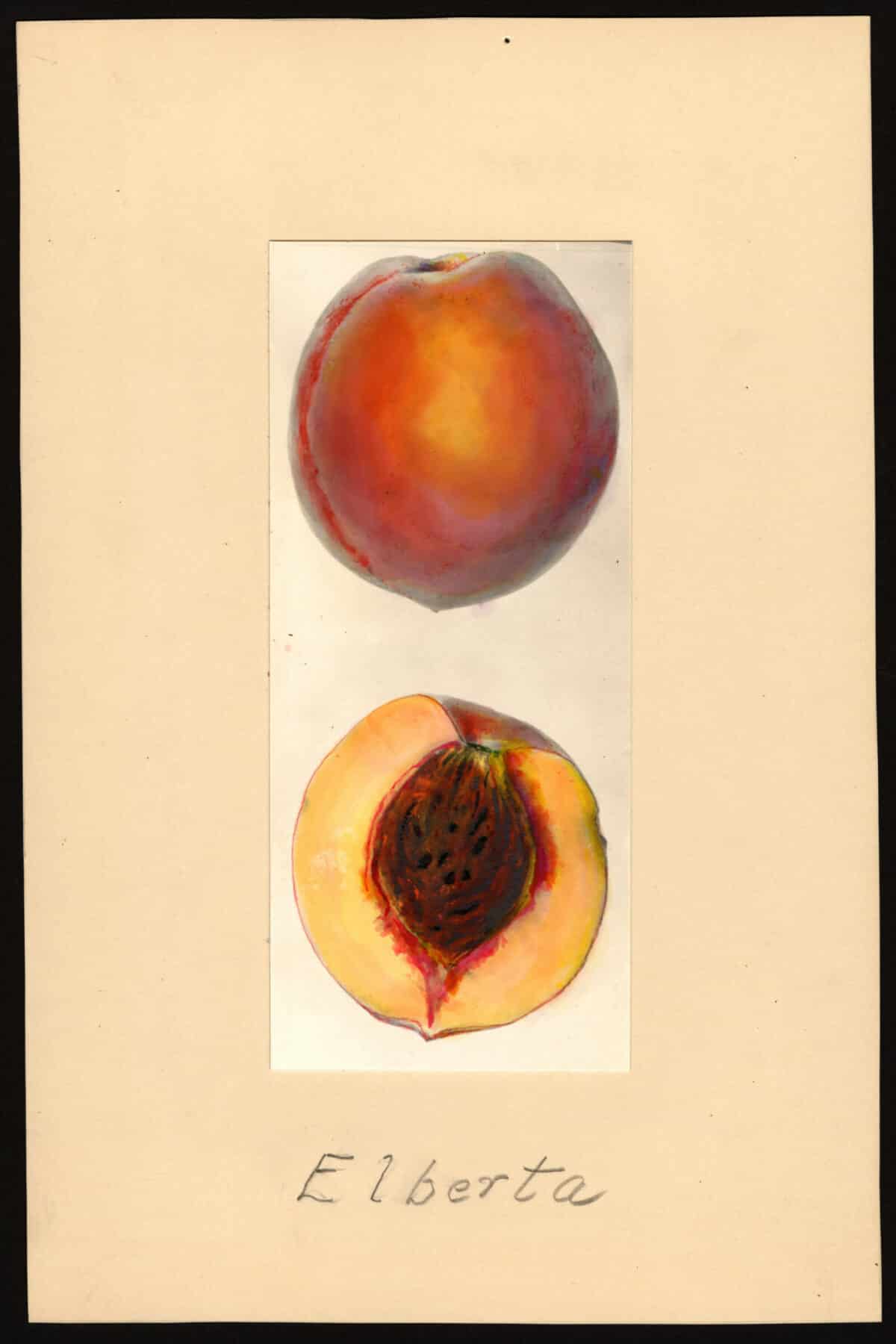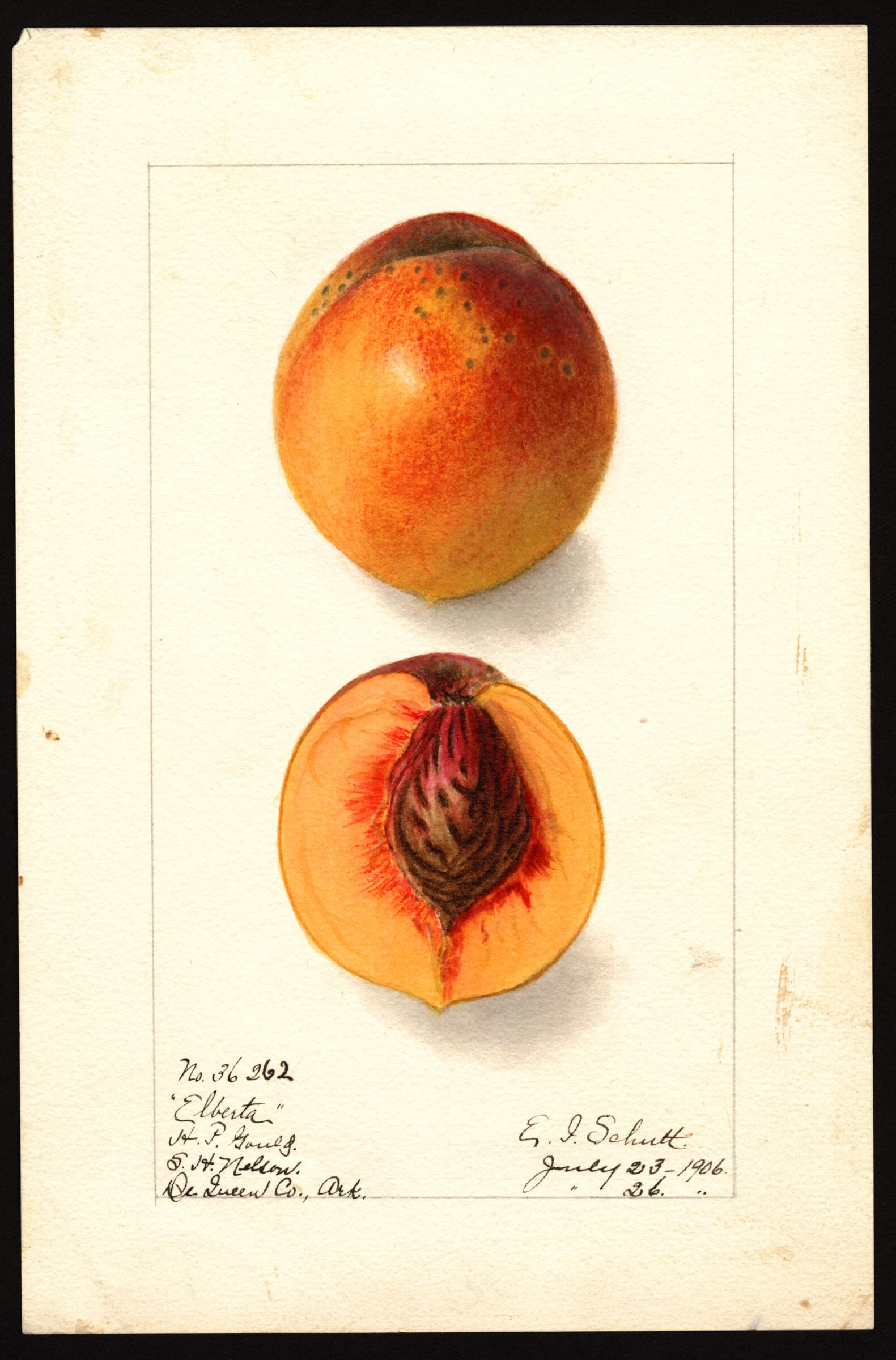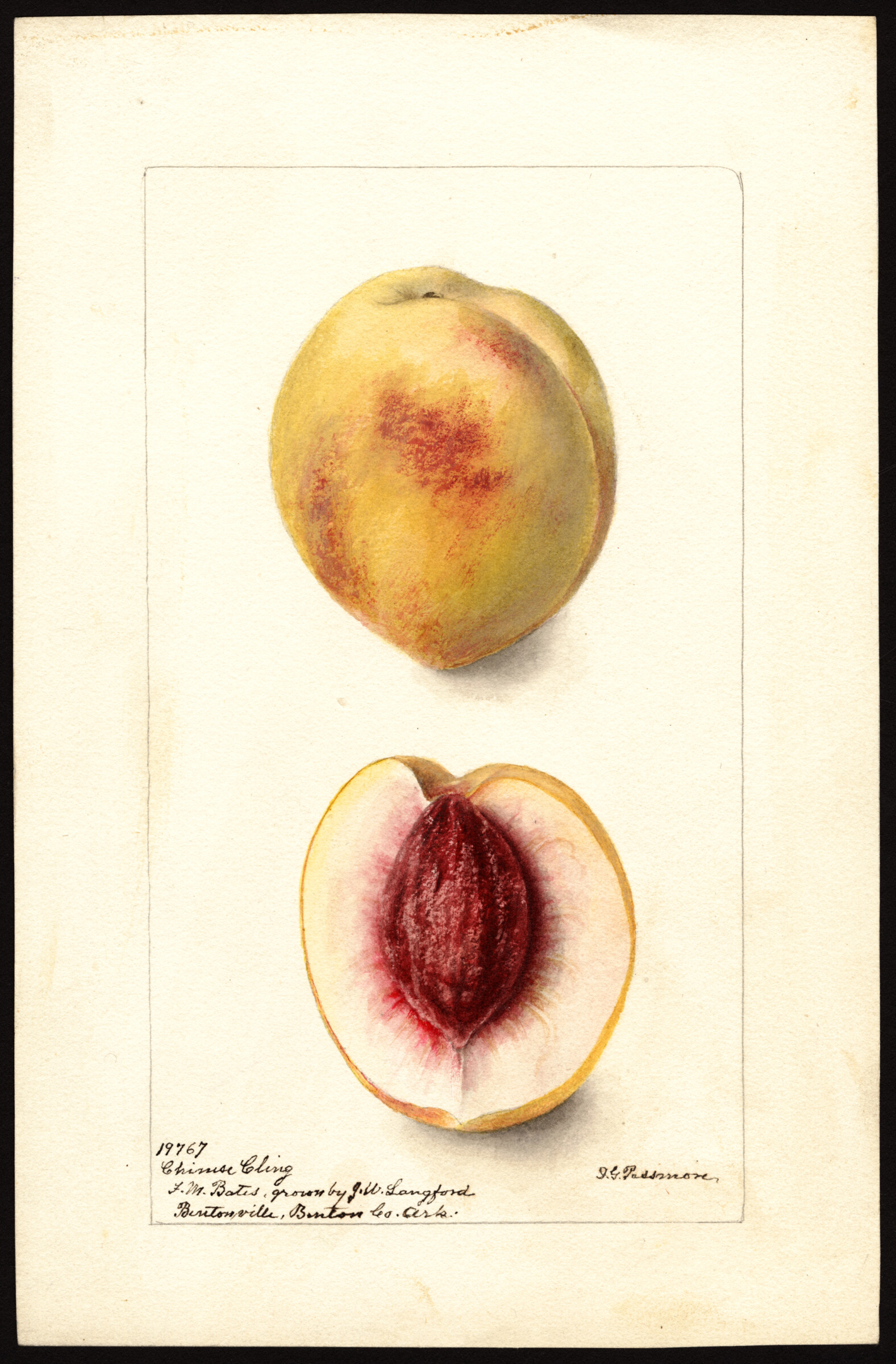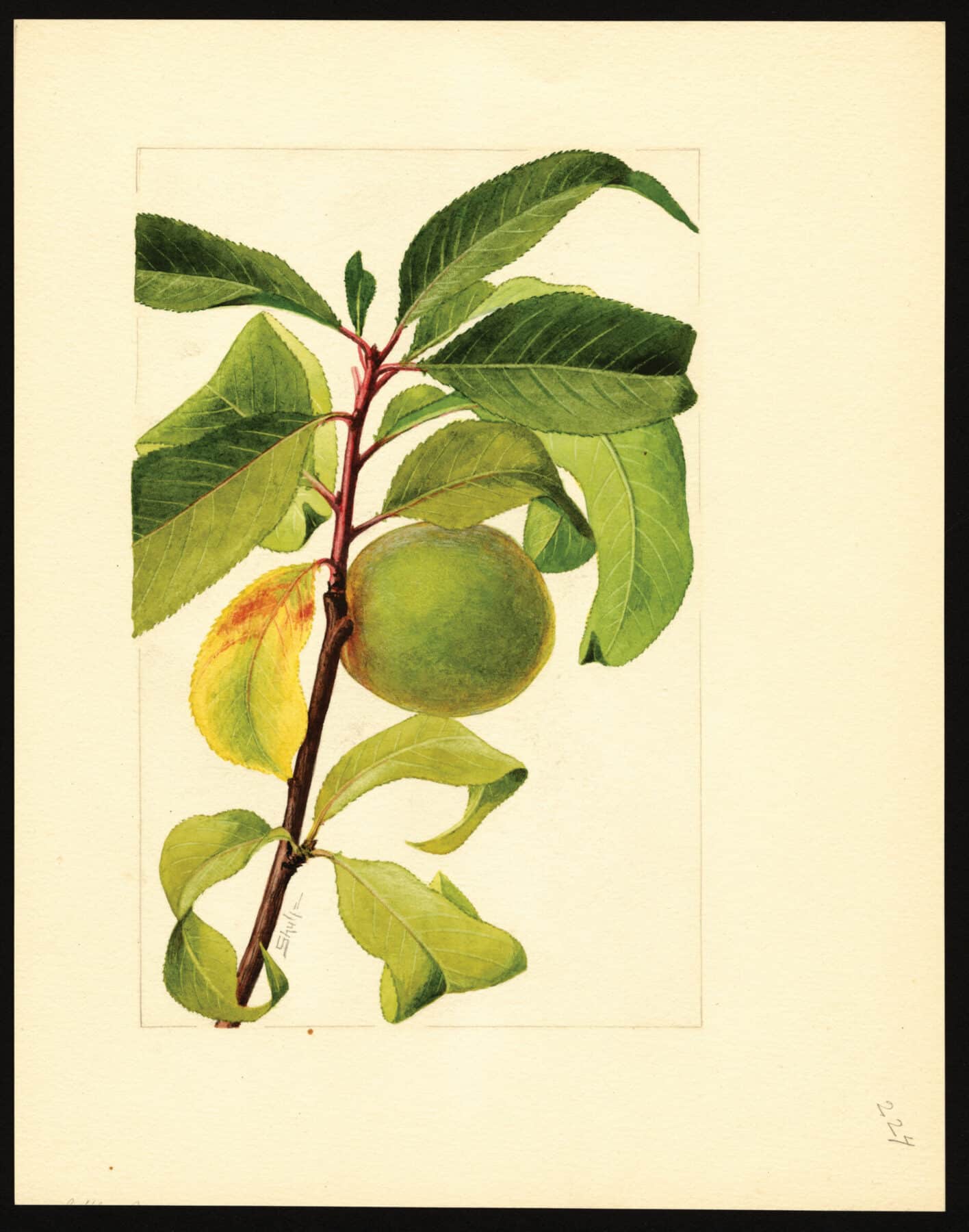The Pomological Watercolor Collection
In the late nineteenth and early twentieth centuries, healthy orchards and groves were seen as crucial to national prosperity. As people across the country created new cultivars, or varieties, through hybridization, the US Department of Agriculture (USDA) set out to document them with a national register of fruits. Between 1886 and 1942, USDA’s Division of Pomology commissioned artists to create illustrations of thousands of fruits and nuts. A historic botanical resource, the Pomological Watercolor Collection, which is housed at the National Agricultural Library in Beltsville, Maryland, contains 7,497 watercolor paintings, 87 line drawings, and 79 wax models created by approximately 21 artists.
As people across the country created new cultivars, or varieties, through hybridization, the US Department of Agriculture set out to document them with a national register of fruits.
In order to ensure color accuracy, watercolor—rather than photography—was the preferred medium. These technically precise paintings were used to create lithographs illustrating USDA bulletins, yearbooks, and other series distributed to growers and gardeners across America.
The illustrations realistically portrayed fruit in all conditions: the immaculate, the bruised, and the decaying. These watercolors, most of which were painted by women, tell the story of agriculture at the turn of the twentieth century and provide a visual time capsule of many fruit varieties that no longer exist.
